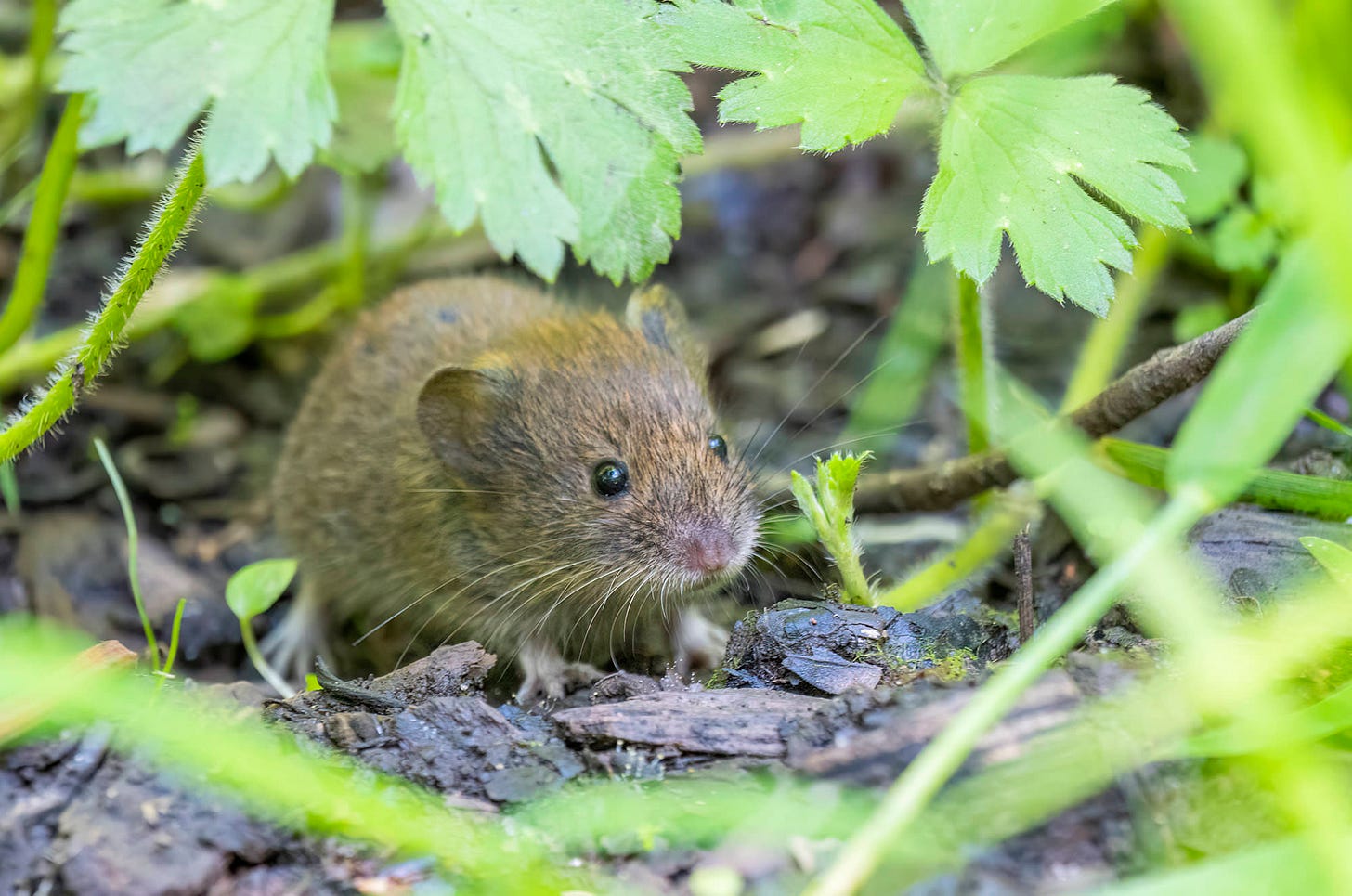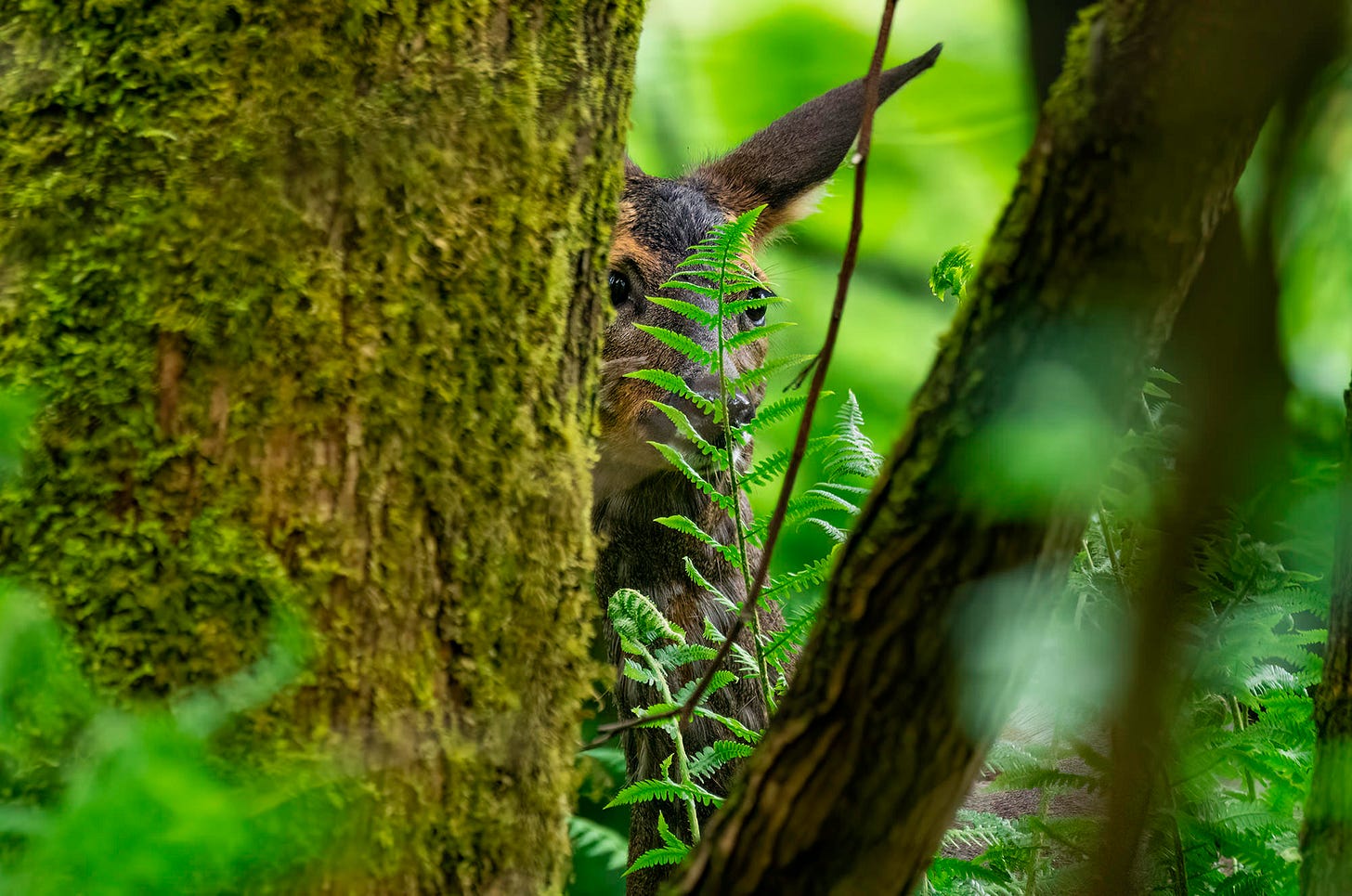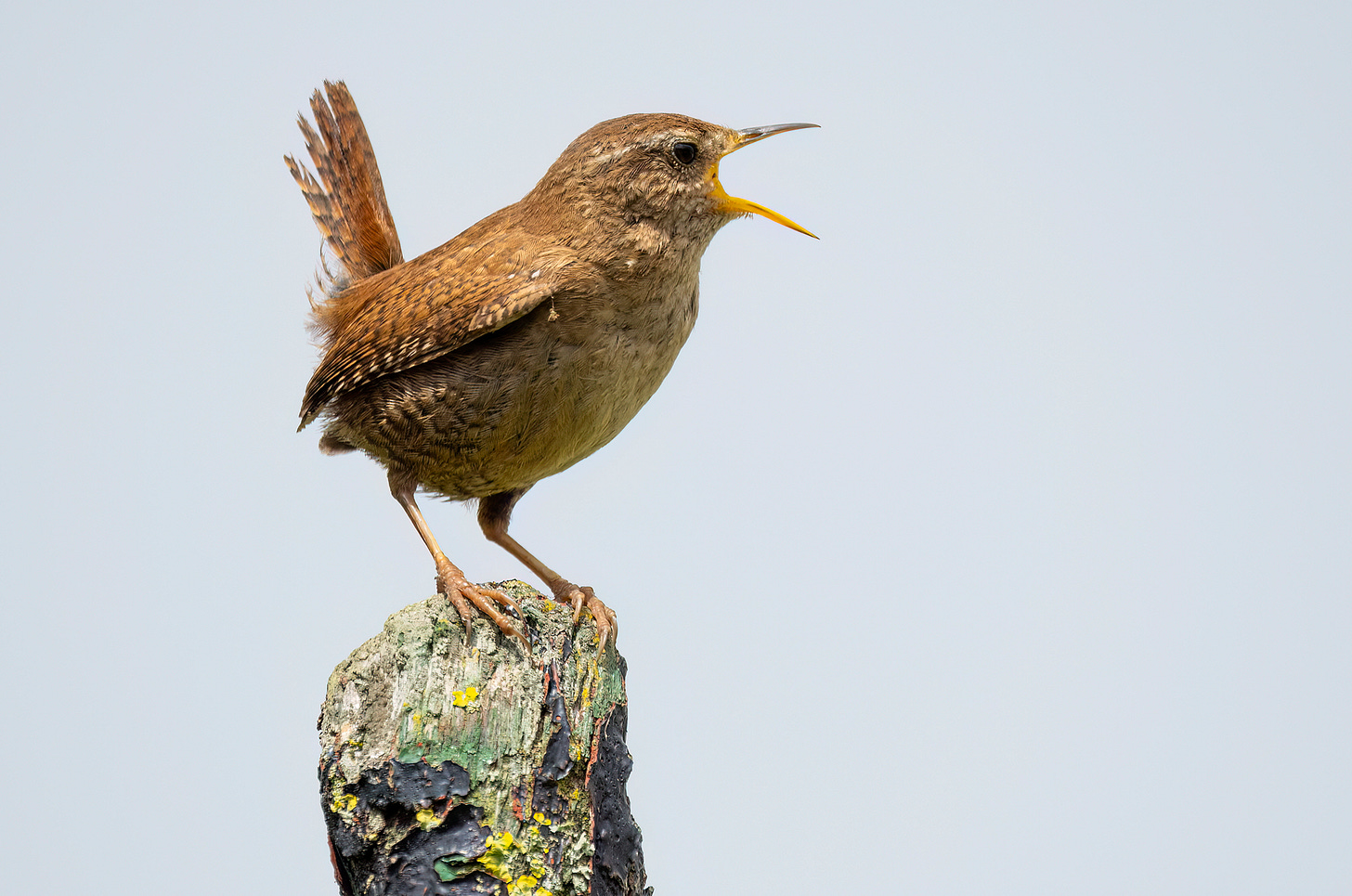July 2024 Viewfinder
There are surprises in the shadows in this month's Opposite View Wildlife Photography newsletter.
It’s often the unexpected encounters that bring me the most joy when I'm walking through the woods with my camera.
A brief glimpse of a fledgling treecreeper being fed by a parent. The flash of a fox taking a shortcut through the dense vegetation. A blood-curdling call, followed by the briefest glimpse of a jay from the tree canopy. None of these are big wildlife encounters – and most don’t result in photos – but they certainly brighten my day, particularly when I'm on my lunch break from work.
However much they lighten my mood, the one thing these encounters in the woods have in common is that they happen in the shadows. After years of photographing woodland wildlife, you think I would be used to dealing with the lack of light. However, it always seems more of an issue in the summer - when the blazing sun can be beating down on the fields, while only making it down to the leaf-covered floor in harsh, bleached-out patches.
The contrast between light and shade can make photography tricky, particularly when subjects are on the move through the trees and bracken. The bright sunlight can be deceptive and result in me using a lower ISO than needed, slowing my shutter speed and causing motion blur that can make images unusable.
I remind myself every time I head into the woods now to push my ISO higher than I think I’ll need it and I’d recommend that you do the same. With the amount of denoising tools now available to us, grainy images can be dealt with, while a blurry blob cannot. And if you don’t want to take my word for it, pro photographer and OM SYSTEM ambassador Andy Rouse said in a recent OM SYSTEM email on wildlife photography tips:
“Never be afraid to push your ISO up to keep your shutter speed high. The most important thing is to get the image sharp as you want it, ISO doesn’t count at all. Forget all the silliness about noise and ISO, what counts is getting the picture sharp. I regularly shoot ISO 6400 in my professional work and it’s fine for me so it will be fine for you if you need it”.
And, boy, did I need it when I got a little surprise on a lunchtime walk earlier this month. As I write this, the weather is dry and calm. However, going back a few weeks, it was a different story, and, on this particular walk, I experienced the four seasons in one day cliché.
When I arrived in the woods there were heavy rain showers rapidly followed by bright sunshine because the clouds were hurtling across the sky on strong gusty winds. Visibility wasn’t great, with leaves flying through the air while the swaying branches sent the little light there was spiralling wildly. Like the t-rex in Jurassic Park, my vision is based on movement, and I had left my thermal monocular at home charging, so I was struggling with the conditions.
It was only the flash of a rust-coloured figure in the field beyond the trees that indicated the presence of a roe doe. I paused to see where she was headed, when I noticed something else on my side of the fence. It was a much smaller rust-coloured shape and was quickly joined by another. When I finally managed to focus through the waving branches, I gasped.
There were two tiny roe deer kids meandering their way through the long grass and they were headed straight for where I stood. I could capture some images while they were at a respectable distance but, as they came closer, I realised I would need to move away to avoid scaring them and their mother.
As I walked out of the woods and into a rain shower, I had to check the images on the screen of my camera to reassure myself that I hadn’t dreamt up the kids. You see, after having a whole year without any roe deer babies on my local patch, I was delighted to have the opportunity to photograph youngsters again, having convinced myself that it would be at least another year before I saw any.
I captured some usable images in that encounter but there were plenty that were blurry nonsense, proving that I hadn’t compensated enough for the lack of light, despite having cranked my ISO up in advance.
If you want to see some images of the new kids on the block (sorry!), please take a look at my piece on using thermal imaging for wildlife photography (link below), which also explains how this technology, along with my fieldcraft, is helping me to avoid disturbing the roe deer. Another subject that likes to hang around in the shadows is the tiny bird with the big voice – the wren, which is the focus of this month’s Species Spotlight.
Before I let you go and read those blogs, I’ll leave you with another image from the shady woodland floor. This time, I was at the RSPB’s Lochwinnoch Reserve, watching the birds at their feeding station, when I noticed movement below the table. A bank vole scurried in and out of the vegetation to collect the dropped seed, while I frantically tried to lock focus on it for the few seconds it appeared. It was a relief when it finally paused for longer than a moment and I captured this image...at ISO 3200.
Best wishes,
Rhiannon
Opposite View Wildlife Photography
Through my lens
Hot shots - using thermal imaging technology for wildlife photography
As a wildlife photographer, the welfare of my subject is the priority. The last thing I want to do is disturb the roe deer I photograph, and I have a few methods that I use to ensure my presence doesn’t cause them any stress. However, all those techniques - using my voice for recognition, slowing down or changing the direction of my approach, pretending to browse on vegetation, sitting down - rely on me seeing the deer before they see me or before I get too close to them. There have been a few times where I've almost literally stumbled across a resting deer and we've both jumped out of our skins - an upsetting and frustrating experience. But how could I stop it from happening?
I started to see more articles and adverts mentioning thermal imaging and it piqued my interest. I knew that people tracking and monitoring wildlife used the technology, but I hadn't considered using it for my photography. However, I had some money saved for new equipment and decided to investigate if it would be worthwhile buying a thermal monocular.
In this blog, I explain how I’m now using thermal imaging to avoid disturbing my local roe deer and share the images I’ve captured.
Species spotlight
Wren - the spiky serenader
A rustle in the undergrowth accompanied by a huffy “tik-tik” sound means my walk is being watched. A tiny figure flutters in the low branches ahead, barely seen but heard. Making me aware that my presence is unwelcome, ushering me on my way. How a bird so small can be intimidating is beyond me, and yet I increase the pace of my walk to escape the “tik-tik” tirade. As I glance over my shoulder, the bully in the bushes makes a brief appearance on an outlying branch, tail cocked before disappearing back into the safety of the shadows. It's the unmistakable outline of the wren.
In this blog, I explain why the wren has a personality as big as its voice and share some images and footage of this tiny bird.
And finally…
If you’re looking for more vole action, check out my trail camera footage from our holiday in the Lake District back in 2021.
There are more videos from my trail camera available to view on my YouTube channel and plenty more - including dolphins, waxwings, deer, seabirds, and all of my top tips videos.
Please subscribe to my channel to keep up to date.
Keep in touch
Thanks for reading this! If you have any comments or questions, opportunities for photography or if you would like to use any of my images, please leave a comment. I’d love to hear from you.
You can also follow me on:






